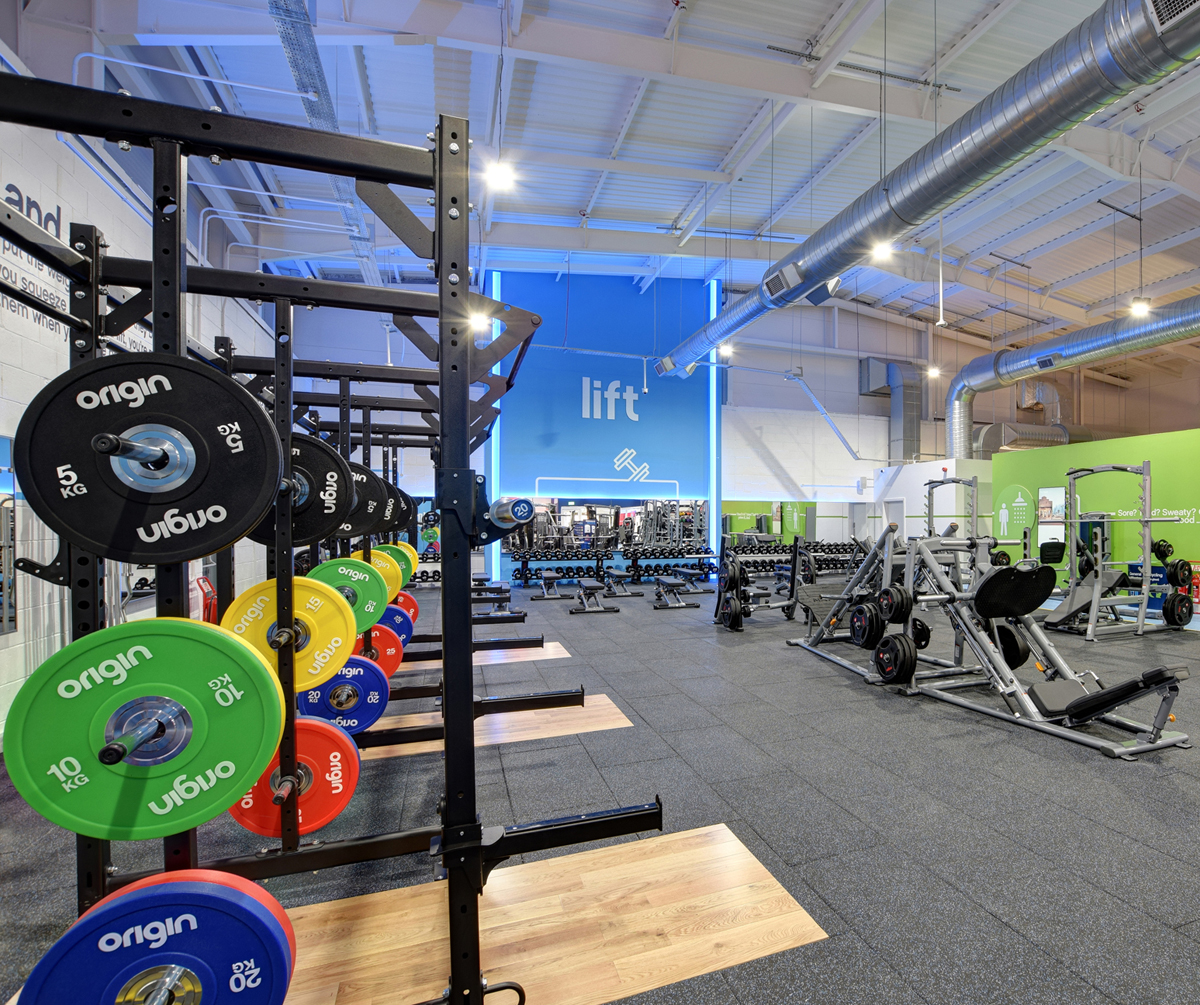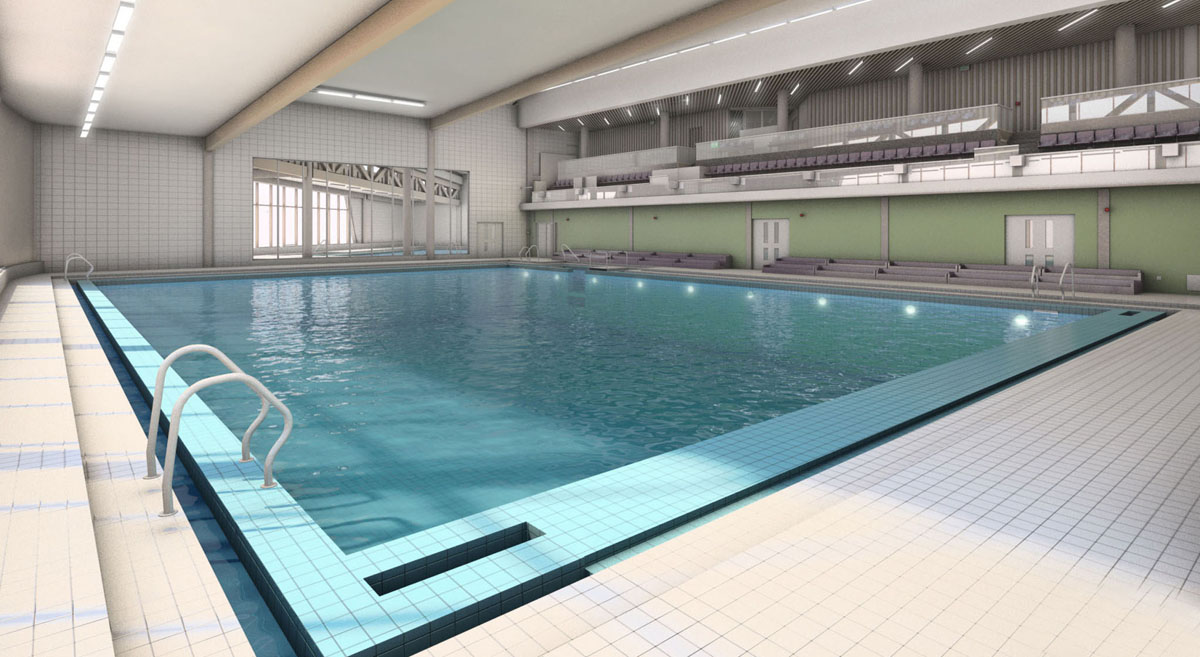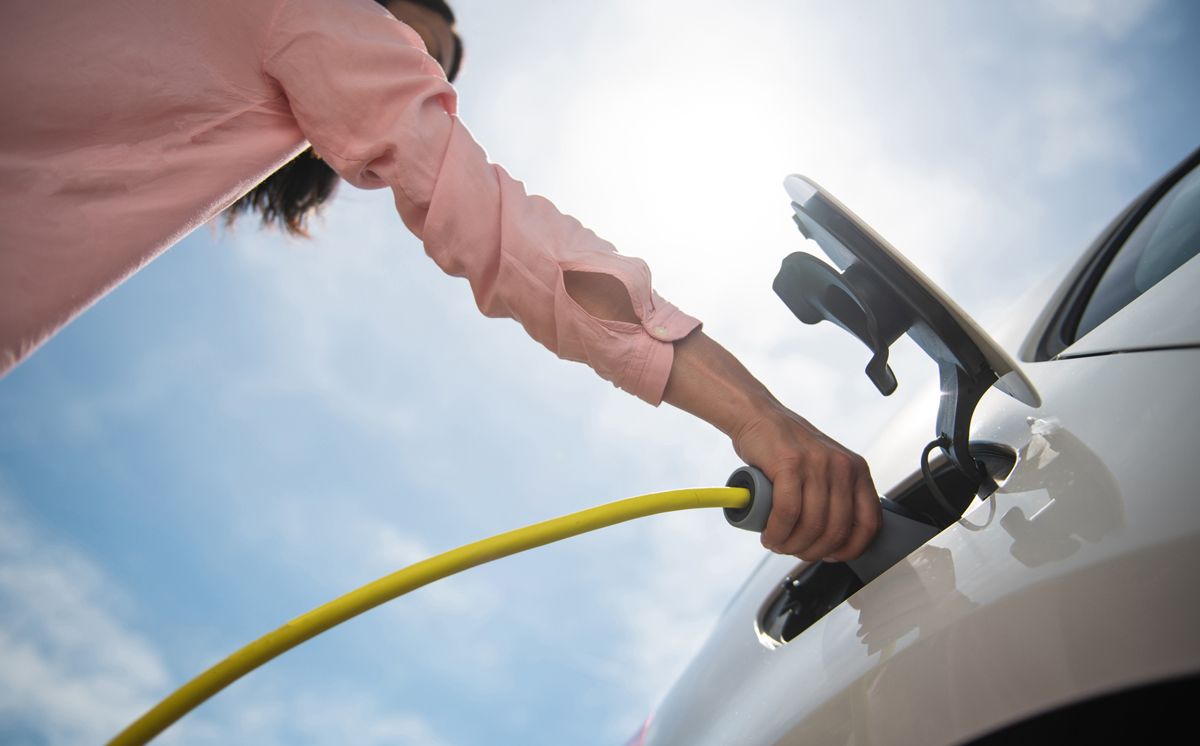features
Everyone's talking about: Energy
Energy is top of the agenda for two major reasons – cost and decarbonisation. With these two on a collision course, our experts share their views

Talk of parents putting their children in wetsuits for swimming lessons is highlighting the challenges being faced by some operators as volatility hits the global energy markets.
Many believe this is an opportune time to decarbonise, but although investing in renewables can lead to lower levels of emissions, counter-intuitively, it can also increase costs if green power is not generated on-site and needs to be bought on the market, as electricity is typically more expensive than fossil fuels.
So although governments have been funding decarbonisation schemes and reducing emissions, they can put up energy bills and until this situation is resolved, energy costs and the environment will remain on a collision course.
The ultimate goal is to move all our energy infrastructure over to electricity, so we can then feed power into this network that has been sourced from renewables, rather than burning fossil fuels on site with gas boilers and so forth.
When it comes to reducing bills, some suggest the sector should organise the purchasing of energy collectively – within the law of buying cartels.
There’s sense in this idea, as other industry sectors with suitable levels of scale are able to negotiate directly with energy suppliers to reduce their energy costs.
Some supermarket chains, for example, transact with the national grid to turn their freezers off right across their network for short periods of time during peak demand, in exchange for cash rebates – with this being done in line with health and safety best practice.
The Carbon Trust estimates that if all leisure centres reduced their energy consumption by 10 per cent, this would lead to savings of over £70m, a potentially strong negotiating position if operators could put aside their competitive instincts.
So where does this leave operators when it comes to solutions? We ask our experts...

Energy prices change throughout the day, influenced by global, socio-economic and weather-related factors and governed by supply and demand.
If the weather is cold, for example, demand for gas goes up and the price goes up. However, as the market is volatile and based on futures, the possibility of cold weather next week will also increase today’s gas price.
What we have at the moment is a perfect storm of three things driving up prices: large demand post the almost historic lows due to COVID, as businesses globally are coming back on-line, the war in Ukraine and increasing UK inflation.
Another driver of UK energy charges is the price of oil (shown in dollars, so currency exchange rates also affect this).
Similar spikes were seen in previous ‘global-impacting’ situations, such as the 2008 financial crash and the Fukushima nuclear disaster.
My view is these spikes will begin to soften as OPEC produces more oil and when the war in Ukraine settles.
Of the UK’s 5,000+ public leisure centres, around 3,000 are 20+ years old, making energy the second highest overhead. As such, they’re less energy efficient due to their ageing systems.
The quickest, simplest things to do in the short term are simple improvements to operating practices, such as checking lights are off, adjusting setpoints down a degree or two in areas that are heated and up a degree or to in cooled spaces.
Automatic timeclocks in building management systems can be turned off or put to night setback an hour or so before the site closes.
Next is building modification. Again start simply by installing variable speed drives and/or high efficiency pumps – a normal 15kW swimming pool pump running 24/7 will use over £20,000 of electricity in a year, so a few percentage increases in efficiency can save thousands of pounds.
Generally upgrading all old efficient equipment (even gas boilers) will help.
The next thing is on-site generation. Solar panels are relatively simple to install, so long as a structural roof survey has been completed and loads assessed. These will generally pay for themselves in eight years or so.
Another option for on-site generation is Combined Heat and Power (CHP). This burns natural gas to generate hot water – like a regular boiler – but also generates electricity and as electricity is about six times more expensive than gas, this will save money, although it won’t help with decarbonisation.
The final piece of the puzzle is getting the best price for your units of energy. There are bad energy operators who say they don’t charge a fee, but have a deal with the supplier, so could be passing the cost on to you, so shop around.
Bad advice is often worse than no advice in that signing a flex deal when the market is going up or fixing it when the market is unusually high will both cost more than you need to pay.
Make energy a monthly KPI in your board reports; ensure initiatives to reduce its use are owned by the MD/CEO and; talk to your landlord about plant replacement. You should also train staff to be competent in reducing and monitoring usage.


I’m hearing about energy costs increasing four-fold and that many operators in the UK who were buying energy at 14p/kWh are now being offered rates up to 52p/kWh.
Also that some energy suppliers who’ve sold at a fixed rate are unwilling or unable to sustain the deal they struck and are reneging on ‘forward-bought’ power.
There are also local authority operators who have no benchmarking protection within their contracts, meaning they have full exposure to price increases and – even where they have benchmarking protection – council partners who are unable or unwilling to meet the increased costs.
Despite efforts to embrace efficiency, the savings that have been realised pale into insignificance when compared to the hike in energy costs.
No amount of investment in variable speed drives, lagging of pipes, forensic management of building management systems and dropping the temperature of water will compensate for the increases the sector is now having to bear.
Let’s say energy is 10 - 15 per cent of operational expenditure. On a contract turning over £10m a year and with an operating margin of, say, 3 per cent, that’s £9.7m of expenditure and £1.45m of energy (at 15 per cent).
If energy costs were even to double, that operation is making a loss north of £1m. And there, you have it – an unsustainable operation.
When costs go up, markets usually respond by passing these on to the consumer, but with the cost-of-living squeeze, the opportunity to apply large price increases seems limited.
It’s unclear if collective negotiation could secure improved rates, although long-term purchasing deals of green-energy may still be possible.
I suggest a collaborative approach is required, that puts competition and ego to one side and genuinely seeks creative and agile solutions for the whole sector.
There could also be a capping instrument to recognise the value of swimming provision in local communities, where the public sector is the principal provider.
Consideration could be given to tax levels, or incentives around green energy – or interest-free loan schemes to enhance the energy-efficiency of facilities.
We would do well as an industry to garner the support of those with scientific and technological expertise. I always get a sense that when we campaign, we tend to lack gravitas and struggle to bring data-led arguments and innovative technological solutions that might find greater favour.
We should also be mindful of design, specifying alternative fuel sources and carbon-conscious design to create facilities that meet demand. I wonder how many pools in the UK have a deep-end, but don’t need one?
The ‘power’ of the public sector is unequivocal. Many are working hard to enable their services to become more relevant, valuable and attractive to more people than ever before, it would be a tragedy having worked so hard if the cost of ‘power’ renders those efforts impotent.


Although the price of gas has seen unprecedented increases recently, the cost had actually been steadily increasing for the past 24 months, with a 30 per cent increase in the 12 months to April 2021 and a four-fold increase since then.
Our electricity prices have been following a similar trend, but with the promise of low-cost renewable energy, is it the wholesale market that’s failing to deliver, rather than renewables being uneconomic?
The cost of renewables has dropped dramatically in the past decade and in the UK, gas now generates less than half our electricity – 39 per cent over the past year – with renewables and nuclear providing 25 per cent each.
However, in the wholesale market, the most expensive generator sets the price, which is almost certainly gas, as at least some gas plants are needed most of the time, and they won’t operate unless the electricity price is high enough to cover their operating cost.
This means the real benefits of low-cost renewable generation can’t be realised until the UK capacity is dramatically increased to a point where it becomes the marginal price.
The only benefit from the current market is the incentive it provides to improve efficiency and reduce consumption, with higher costs making payback periods shorter and capital investment more attractive.
The best way to fully realise low-cost renewable generation is to produce it yourself at the point of use, but few of us have the ability to do that, so the focus must be on energy efficiency.
For example, ‘Insulate Britain’ has been headline news, highlighting the poor quality of a lot of UK buildings. While insulating our gyms may not always be within our control, ensuring doors have seals and air leakage is kept to a minimum definitely is.
There’s no longer an excuse for having old lamps instead of LEDs – even for feature or occasional lighting, while saunas and steamrooms are high energy consumers, so it’s essential they’re switched off when nobody is around to use them.
Ventilation systems became a key focus at the height of COVID-19. While adequate ventilation is still essential, ensuring it’s properly controlled will deliver both the most efficient operating cost and the minimum heating or cooling load on the air conditioning system. The use of heat recovery units can now provide even greater savings, given the higher utility cost.
Air conditioning is one of the biggest energy consumers, and as the main drivers of energy consumption are the weather – which we can’t control – and the building occupancy – which we all want to be at a maximum – it’s sometimes difficult to see how to save. However, ensuring the space temperature is accurately controlled and trying to increase the set point by 1 degree when it’s hot outside, or lowering it by 1 degree in the heating season can actually make a big difference.
Ventilation and air conditioning systems will be fitted with filters –the dirtier the filters the harder the equipment will have to work and the more energy it will use. Regular cleaning or replacement will save energy, and maintenance will ensure it’s operating as efficiently as possible.
Reducing consumption is the first step to lower bills and carbon emissions in the short-term, while purchasing renewable energy and supporting the UK’s transition to a low-carbon electricity grid will result in lower prices in the longer term.
The winners will be those that take the longer term view and invest in highly efficient plant and services when lower cost options are possible. Lifecycle value has never been more important.


Public operators knew the road to net zero carbon was going to be a difficult one, requiring huge amounts of capital investment to make ageing pools energy efficient. We hadn’t realised, however, we were going to be ambushed so early on the way by massive increases in energy costs.
At GLL, we’ve calculated that at today’s energy prices, every person who uses a public pool is already subsidised by an average of £5.
This industry-wide crisis has been caused by a number of moving parts: serial lack of investment in energy efficient pools over the decades; high and increasing cost of compliance, staffing, energy and chemicals; unrealistic pricing which has always assumed (with no logic I’m aware of) that swimming should be hugely subsidised and the trend towards offering ‘bath temperature’ pools.
This crisis has to be a major wakeup call for our industry and our council partners.
We know the value of swimming, it’s an essential skill that protects personal safety as well as physical and mental wellbeing and it’s our duty to ensure every community has access to a pool, however, if public swimming is to survive, we need to invest heavily in research now to develop financially efficient pools.
There are technologies out there that can help, but no coordinated approach to their development, evaluation and deployment.
As regards the government’s zero carbon ambitions, we need to recognise that these can only be achieved by a wholesale shift from gas to green electricity. As electricity costs as much as six times more than gas, it’s obvious this will be unaffordable for swimming pools if we stay with the current business models.
We need to get Assisted Lifeguarding (Drowning Detection Technology) mainstream and recognised by regulatory and advisory bodies for what it is – a better way of protecting life in our pools while helping contain staff costs.
We need to bring pool water and pool hall air temperatures back down to sensible levels – perhaps running ‘warm’ sessions two days a week for special groups (using BMS controllers). It might also help our lifeguards be more alert as well, if they’re not ‘heat drowsy’.
We need a ‘model’ pool (perhaps this is St Sidwell’s Point, Exeter?) that deploys green technology, super insulation, maximum heat recovery, assisted lifeguarding and smart programming – that we can all get behind with confidence as an ‘industry standard’ and that can be replicated across the country.
Future assessment and planning of built facilities needs to account for the changing landscape of the industry and the likely need to have fewer, better and more efficient public leisure facilities in the future.
Doing nothing is not an option – the GLL energy bill has increased 250 per cent compared to April 2019 and all indications are it will go higher. The only long-term solution is to use less energy. In the short term there will need to be increased prices and public subsidy – unless someone knows something I don’t!


Like all operators, the subject of energy consumption is never far from our minds.
We’ve made strides in this area, starting with the work we began in 2018 to achieve the ISO 50001:2018 Energy Management Systems accreditation.
When we were awarded this in 2019, we became the first leisure operator in the UK, and one of only a handful globally to achieve accreditation.
Receiving ISO 50001:2018 Energy Management Systems was a line in the sand moment for Serco Leisure, we were laying down a strong commitment to reducing carbon emissions by 15 per cent by the end of 2022.
Currently, savings made already sit at just over 6 per cent and the 15 per cent figure is in sight and still considered highly achievable.
We retained ISO 50001:2018 earlier this year too, which shows our customers, our clients and the people who work at our facilities that we’ve kept our word on that commitment.
Since 2019, we’ve introduced a range of projects geared towards cutting energy consumption. We added Systems Link in 2021 (www.systems-link.com), giving us accurate real-time energy consumption data from across the estate. Any site over-consuming energy sets off an alarm, which gives the monitoring team an early heads-up, so they can investigate with on-site colleagues.
One of the first things we did back in 2019 was focus on facilities with high energy consumption, addressing this group first, as it allowed us to implement quick energy saving wins for the business.
We also reviewed the performance of our Building Energy Management Systems (BEMS) and performed plant optimisation, although it’s important to note that optimisation was never at the expense of service standards or customer comfort – pool temperatures were not affected, as one example.
As well as a more direct approach to energy consumption, we’ve ramped up training and awareness on the issue across Serco sites and for our support staff, introducing compulsory energy awareness training for all staff, while a Green Ambassador has been appointed for each contract, tasked with promoting the initiatives we introduce and ensuring the overall project maintains the momentum we’ve achieved since 2019.
Earlier this year, we launched the Maintaining a Fitter Future initiative which provides customers and employees with an updated checklist of everything being done at their centres to reduce both energy usage and our carbon footprint.


We’re facing a very real climate emergency, and must play our part in averting it. Leisure facilities have traditionally been large emitters of carbon, and many of the buildings we manage are still not as efficient as they need to be. We must develop workable strategies with our partners to address these emissions, support them to hit their climate targets, and empower the public to partake in exercise that doesn’t damage the environment.
Our role is about working collaboratively to ensure facilities can be run sustainably and efficiently.
This year, we’ve set out the Everyone Active Net Zero Strategy that will focus on baseline data to ensure progress towards net zero can be measured, recorded and shared.
We’re ensuring colleagues, customers and contractors are engaged in ways that reduce our carbon footprints to achieve our strategic goals.
We’re also working closely with clients and technical teams to access decarbonisation grants and improve our buildings by implementing measures that drive energy efficiency, reduce costs and reduce emissions.
Within this strategy we’ve set key milestones, including items such as switching to electric vehicles, purchasing 100 per cent REGO-backed renewable electricity (Renewable Energy Guarantee of Origin) and ensuring our head office is net zero by 2025.
We’re aware our strategy is being launched at a time when there’s been a huge increase in energy costs, and also that technology to move away from fossil fuels is expensive to install, but we must play our part in this climate emergency and continue to drive towards net zero.
A key focus right now, with the energy market as it is, has to be reducing what we use and educating colleagues and customers to ensure we’re all more energy efficient. We set ourselves a target of reducing energy consumption by 10 per cent between April 2022 and April 2023.
We must also ‘turn off’ and ‘turn down’ – where we don’t have BMS (building management systems), we’re focusing on auto-alerts sent to colleagues to turn down or turn off unoccupied areas, based on a centre’s programmes.
Online meetings and hybrid working have also reduced our carbon footprint by reduced travel and we’re continuing this across the company.
Longer-term there must be a continued focus on improvement against baseline figures, working towards net zero. We also know we can’t do this alone, and it will take council partners, colleagues, customers and suppliers all playing their part to achieve this.





































































